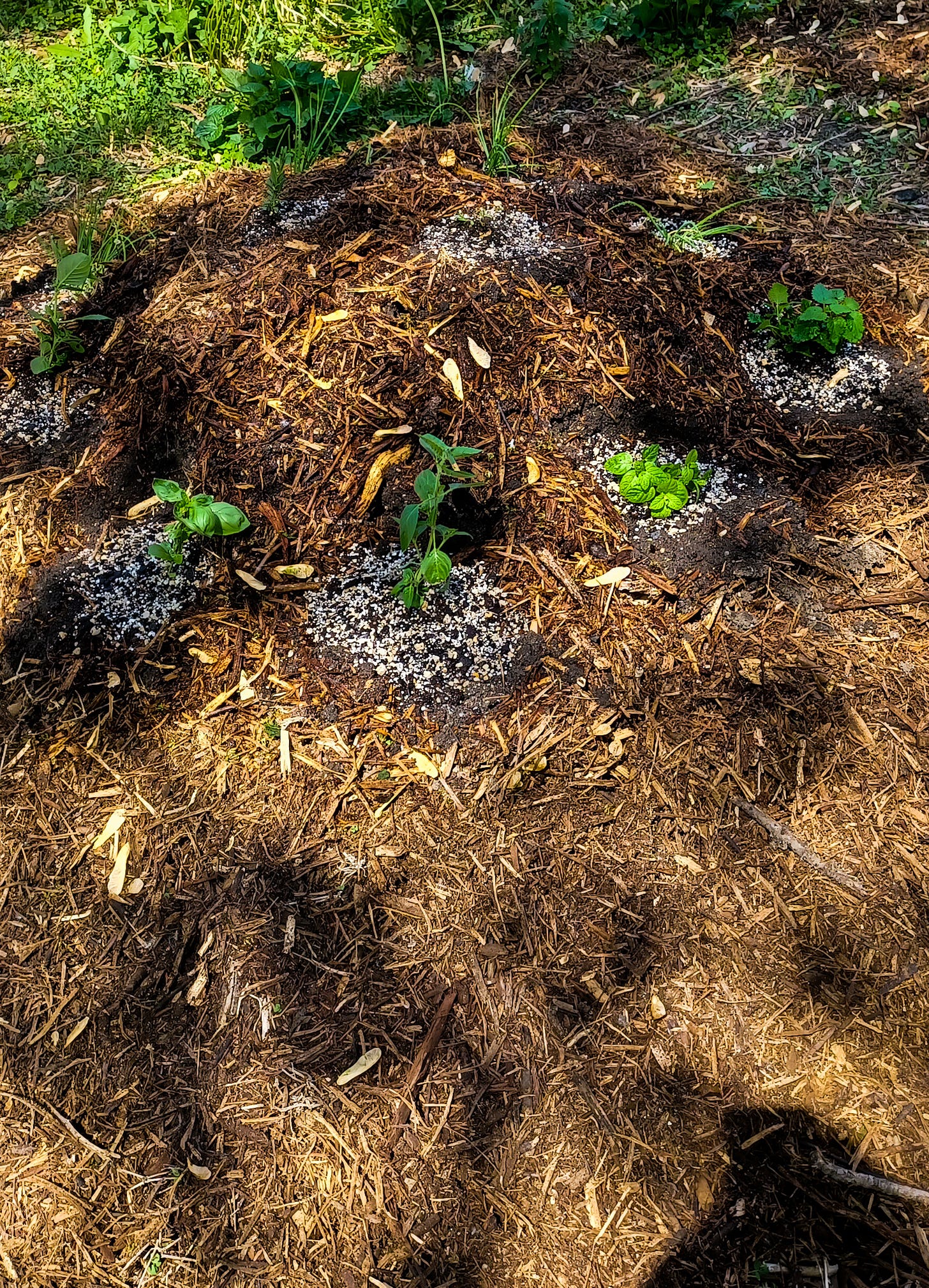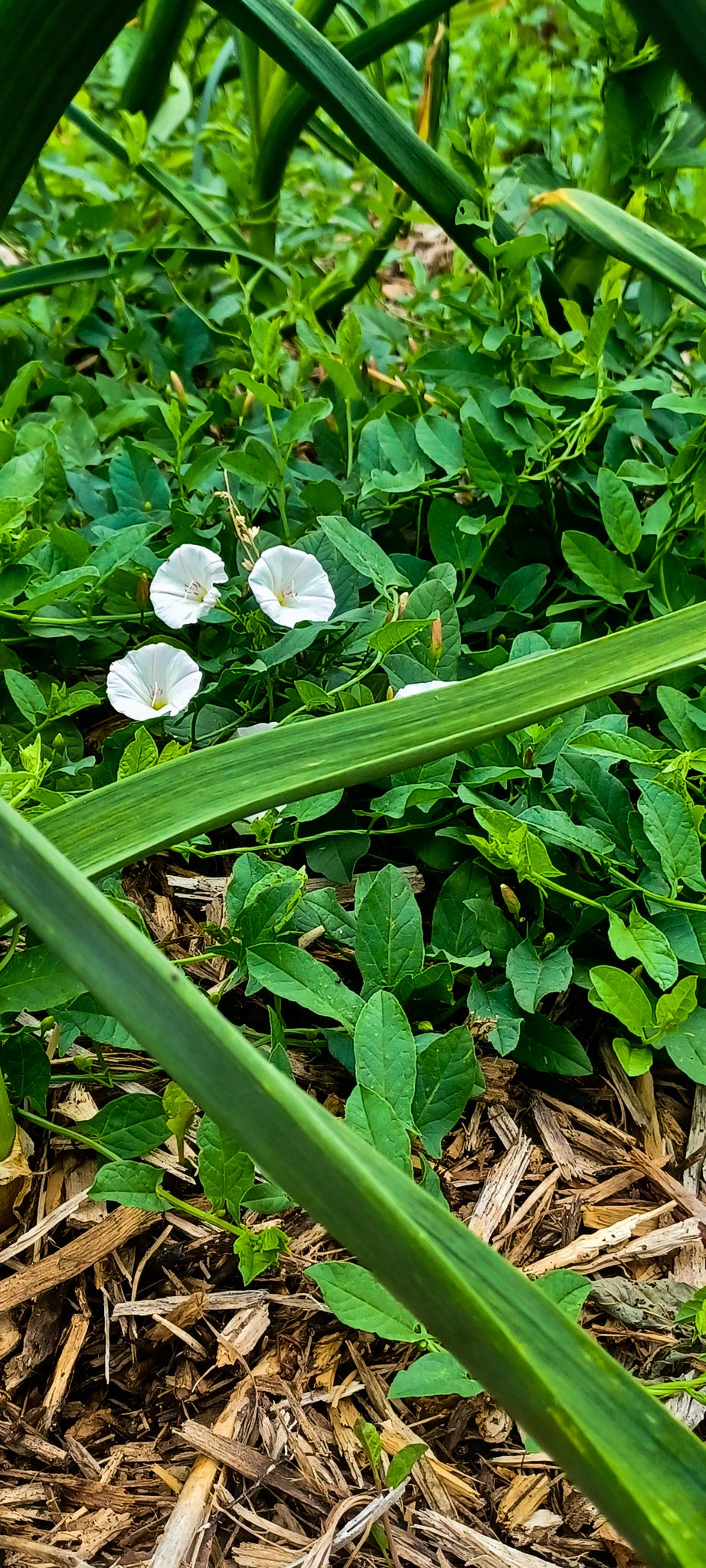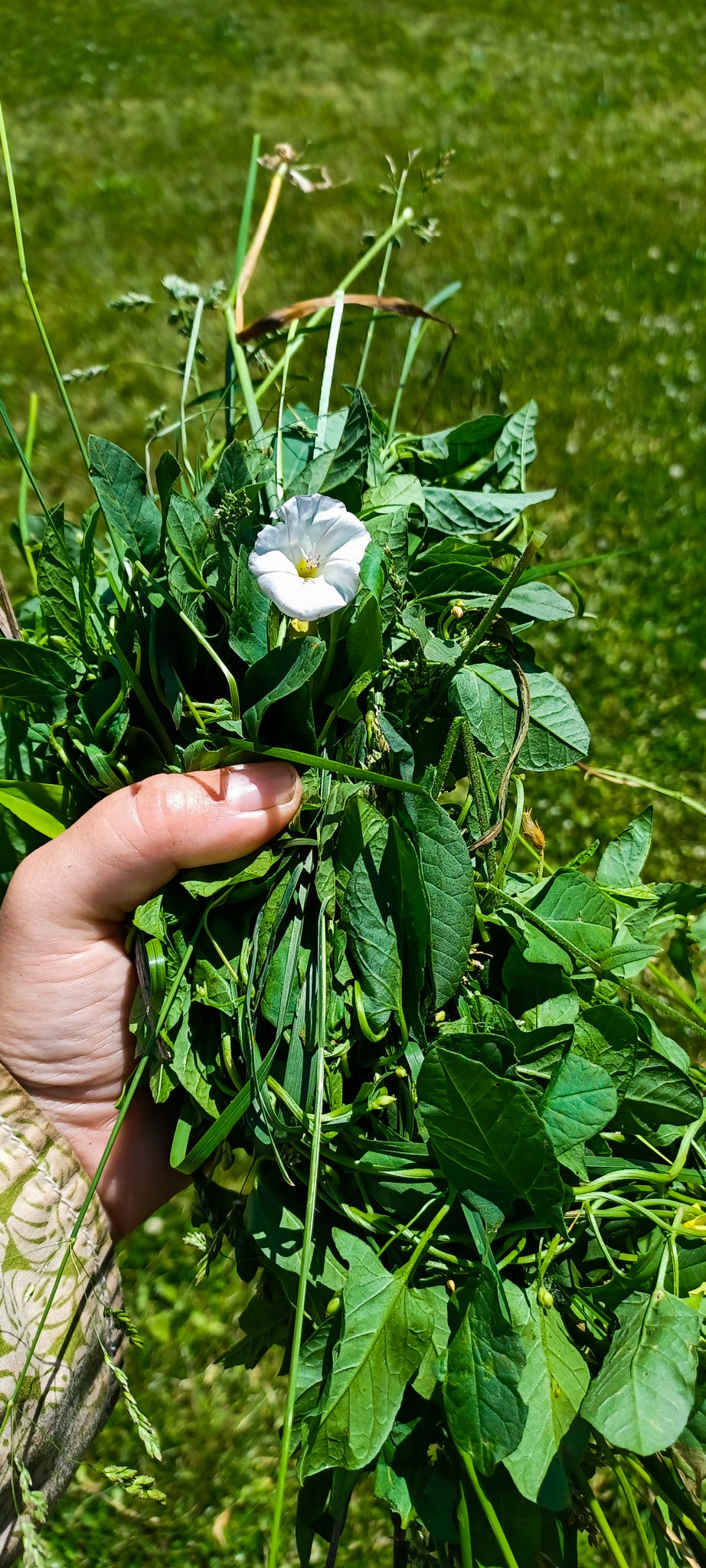Hi pals - a quick note on an upcoming change to the newsletter schedule! I wrote a bunch of these first drafts a couple months ago and as I’m depleting that supply I see that the weekly pace is going to be unsustainable for the kind of writing I want to do in the long term. I also am craving time to do more research and to marinate in a bunch of ideas, which I hope will bear some newsletter fruit that is interesting for y’all to read. If there’s anything in particular you’d like to see me write about please let me know via email or the comments!
So after today’s missive, Notes from Disturbed Ground will be coming to your inbox every other week. Thanks for reading & let’s get to it:
Is that one good or bad? my parents will ask me about plants that come up in their yard. They mean: is it a weed? Or does it have some culturally understood value? Will all the goldenrod make my nose run? The answers I give them are never what they want to hear because I always say that a plant can’t be good or bad, you have to consider its context.
I’m also not the right person to ask this question because I love a wild-looking home garden. A constellation of plants that’s in touch with its untended possibilities even in a cultivated setting. A garden that remembers its ancient roots, that moves towards its feral tendencies. I feel this tendency in myself and I respect it in plants, who are just finding their innumerable ways toward the sun and toward the dark center of the universe simultaneously.
I’m aware that to most people this looks…messy. We are still very influenced by the English ideal of what a garden should look like and how it should behave: strict, neat lines of European plants, pruned and shaped with obsessive attention to detail. Perhaps my messy philosophy runs counter to what many people even consider a garden to be: a tended space where plants are tamed into obedience. I am not very interested in neat borders or hostas. But like everything there’s a spectrum.
In the fall of 2021 I experienced a near-total collapse of my gardening practice. In the spring of that year I had been ambitious (we gardeners are always so very ambitious in the spring, aren’t we?). I had premeditated the murder of this one patch of lawn right out the backdoor, bordered by cement walkways and the driveway. I laid my old flattened cardboard boxes down upon the grass, I poured wheelbarrows full of compost and mulch on top of it. Then I constructed its crowning achievement – the hügelkultur herb spiral, on which I planted many herbs (I am writing up a little how-to for this that I will share with you at some point!).

But then it was the middle of summer and I got busy. At the time I was working as a field hand on an organic vegetable farm – I wrote last week about how farm work is easy to romanticize when you’re not doing it. I picked up another day of work at the farm after a coworker went back to school and then I just…pretty much completely ceased to have the desire or drive to do any kind of outdoor work at home. After a nine or ten hour work day I just needed to shower and lie down in the air conditioning when I got home. I joked about the “smoothening” effect that farm work had on my brain, like all of my thoughts were getting burned out by the scorching sun every work day. I couldn’t eat enough to stop feeling hungry. The garden, though just feet from the door to my house, felt like another planet I barely remembered.
Though I continued to harvest the plants that I had put into the ground in my optimistic furor of the early spring, at some point that summer I surrendered to the garden’s own ideas of wildness completely, and weeds sprouted all over my little hugel-spiral. In this context, plants I consider weeds are plants that pop up opportunistically and crowd out the plants that I put there for my own consumption.
This feels embarrassing to admit but that fall I did absolutely zero things to clean up the garden before winter. Zero. I didn’t cut down the plants that had been killed by frost. I didn’t clear anything, mulch anything, plant any cover crops - every single thing I had planted went to seed (and so did every single weed). By some miracle I hastily threw a bed of garlic into the ground sometime in November - the absolute bare minimum for winter prep in my book (What can I say? I am extremely reliant on garlic in my cooking).
So fast forward through the hibernation winter to spring of 2022 when all of the prior year’s plants that I let go to seed – mostly kale and lettuce – popped up densely and with a decadent lushness everywhere. They were in all the garden beds, they were spreading out into the lawn, they were in my mulched pathways. And you know what? That spring I thought to myself: Good. I did nothing and the plants just did the work for me and planted themselves. Silly humans and our neat-freak preoccupations with spacing and rows and straight lines (which occur pretty much nowhere in nature)! Look at how I’ve hacked the system by being more evolved and closer to the beating rhythm of Nature’s heart than everyone else!
But if you’ve had a garden of your own for any amount of time you are already laughing knowingly at me. To paraphrase Wendell Berry, the great writer of gardens and growing and humans: The gardener carries no greater love for the rose bush than when the knife is in hand. For a while I had abundant lettuce and kale. But just as those common and delicious plants sowed themselves, so too the thistle and the lamb’s quarter and the bindweed had no trouble - biding their time until the season turned towards summer and the early season vegetables were on the wane.
Plants commonly considered weeds like dandelions and lamb’s quarters I can put to good use. If they want to grow, I will roast their roots and put their leaves in my salad. Roasted dandelion roots are commonly used as a detoxifying tea. My angel friend Taryn introduced me to a delicious recipe for lamb’s quarters quiche that I absolutely recommend. But bindweed…no other plant puts me into the conquesting / dominating / force-of-will kind of combat mentality like bindweed does.
I realized that even with this messy / “ungardening” perspective I was still seeing my garden spaces as a battleground where I only ever lost, where the dynamic set me up to only be able to lose. The weeds are out ahead of me, always - even once I started weeding every day. My sense of agitation and frustration grew as the weather got warmer and the weeds multiplied. I wasn’t even fully conscious that this was how I was thinking, I just got angrier and angrier until I realized it and then I stepped back.
Around that time my quilting teacher Marlee Grace taught a class about moving from discipline to devotion: making a shift from the grinding, overriding, mind-over-matter attitude in our work and into a space in which all of the work is a creative act. Remembering that the mundane is actually holy. So many traditions teach this and I need to be reminded pretty much constantly. In this context, seeing the chore of weeding the garden becomes the work of great devotion, of my desire to help the garden grow. It is a perfectly boring, endlessly time-consuming task that is fucking precious and sacred. This shift, for me, changed everything.
So instead of going into the garden like Rabbit in Winnie the Pooh and becoming increasingly unhinged, I take my coffee for a stroll through the beds in the dewy mornings before the sun gets going too hard. I try to look at the plants without assigning meaning, which means without assigning myself chores. I try to just be there transpiring with all the different kinds of leaves. There is always more work to be done in the garden and I put my effort towards not over-identifying as the harried gardener; I try not to let all the work that needs to be done be a problem. When the bindweed is not a problem I can just sit and clip it back to the ground for as much time as I have that day, enjoying the time outside touching plants.
Balance is a myth most of the time, I think, or at least it is an ideal that seems to elude most of us. We chase it down the corridor hands outstretched, trying to grab it and hold on for dear life. If we do seem to get it for a moment it immediately liquefies and slides out of our grasp. This has always felt like a personal moral failing of mine (if you fuck with astrology - I’m a double Libra, which feels relevant here) instead of a myth I could let go of. Or rather, could loosen my grip on by remembering that equilibrium is something I can move towards in practice without using it as a weapon to bludgeon myself.
That shift makes space for other feelings to come through. Respect for the absolute tenacity and will to live that bindweed is (perhaps demonically) possessed with. It lets me de-center myself in the garden. Stewarding the plants and their growing is perhaps the single most humbling thing I do regularly. I see how important it is to allow this to be true – to allow myself to be humbled continuously as I return and return and tend to the garden again and again and again. I kneel on the ground in awe of everything that is growing, and I prune some so that others may thrive. I put my hands in the dirt and I fling myself into the creative work of devotion, which is to say, of living.
One Unsolicited Recommendation
A couple nights ago I finished a book that was recommended to me by my dear pal Abby, who knows me extremely well: The Book of Difficult Fruit by Kate Lebo. It’s an abecedarian that’s a pretty wonderful mix of plant facts, recipes, and memoir. My library copy is littered with page markers: recipe for gooseberry cheese, references to medieval herbal texts, the new-to-me German word Frühjahrsmüdigkeit (“spring fatigue” !!!), and this little part that I loved:
“A garden is made of hope,” wrote W.S. Merwin near the end of his life. “It cannot be proven, nor clutched, nor hurried.”
Whose hope? Whose hurry? As we coax this garden into profusion and plenty, our produce aisle and our sanctuary, opportunistic organisms that lived here before us reassert themselves. I keep the earwigs in check by paying obsessive attention to their hiding places and midnight buffets, but as I pluck them from their suppers, I also crush nasturtiums, baby kales, clematis vines. Cultivating this landscape does not make me master over it. Which is what Merwin meant, I think, when he named the difference between what the gardener hopes and what she reaps.
This difference is not failure.
That’s it for now! Thanks for being here, and see ya in a couple Wednesdays.
Mere





